Khiva: a Central Asian gem on Silk Road
The destination was Khiva, one of Uzbekistan's most well-preserved ancient cities on the Silk Road.
Like Bukhara, Khiva is a Unesco World Heritage Site hosting a wealth of history and culture dating back 2,500 years.
It is approximately 480 kilometres from Bukhara. We started our road trip at 8:00am. The 7-8 hour drive in a mini-van across the diverse Uzbek landscape promised to be a thrilling one.
As we left the city behind, our journey through the steppe started. Contrary to the image of a barren desert, the steppe offers a unique beauty with its sparse vegetation and wide-open spaces. Two hours into the journey, we took a coffee break, savouring the tranquillity of the barren region. Suddenly, the sky turned ominously dark, and a rare desert rain began to fall. It's not an ordinary event as we were told by our driver and guide, Mirza Beg. It was a first time experience for them too.
After the rain, we enjoyed the road trip witnessing small towns and villages with a clear blue sky on the backdrop.
We arrived at Khiva around 4:00. After checking into our hotel in Ichan-Kala, the old city, we quickly set out to explore the area before daylight faded.
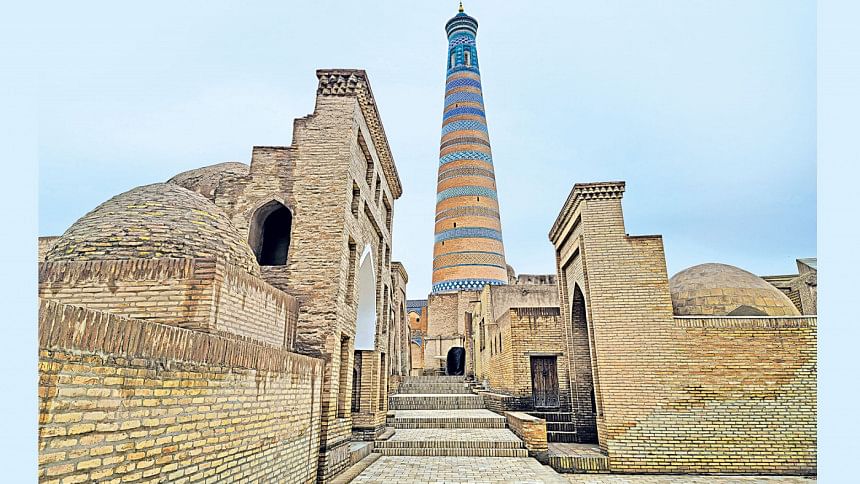
ABOUT KHIVA AND THE SILK ROAD
Khiva is a charming city located in the western Khorezm region of Uzbekistan. This small isolated ancient city is rich in culture and history that spans over a millennium.
Khiva can be best explored walking. There are two parts of this city -- Ichan-Kala or the inner city and Dishankala or the outer city. We chose to stay in Ichan-Kala as it would be convenient for us to explore the city. Ichankalai is old Khiva. Among the cities located on the Silk Road I have visited, Khiva still retains some of its oldest forms.
Central Asia was an important centre of trade during the golden age of the Silk Road trade. The overland routes of the Silk Road passed through the cities and deserts of Central Asia, bearing the footprints of world travellers, merchants, bandits, and warriors. This Central Asian route was a bridge between East and West for a long time. Culture, religion, philosophy have been exchanged along this route shaping civilisations and cultures.
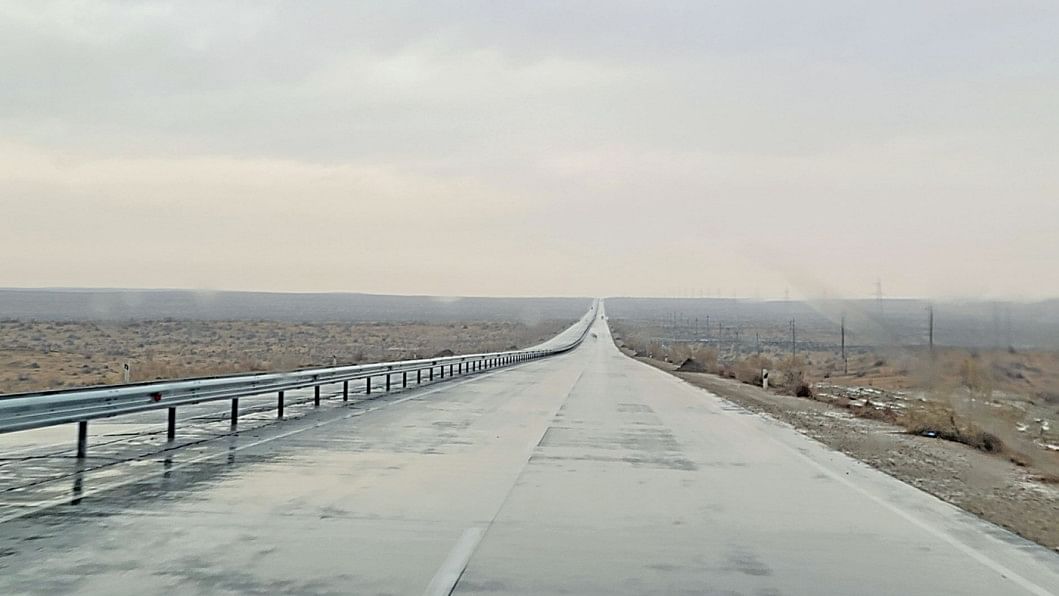
Due to its important geographical location, numerous empires developed here - the Muslim Khawarism Empire, the Mongol Empire of Genghis Khan, the Timurid Empire of Timur and his descendants. The region's Muslim thinkers made unforgettable contributions to mathematics, astronomy, language, literature, and art during their time under Islamic rule.
Contributions of Muhammad Ibn Musa Al-Kharizmi in algebra, Omar Khayyam in mathematics and poetry, Imam Bukhari in Hadith, Al Farabi in philosophy are continuing to enrich the world.
THE CHARM OF ICHAN-KALA
Visiting Ichan-Kala is like stepping into a living museum. The city's layout and architecture speak of its rich past, with every stone path and old wooden door telling a story.
It is a meticulously preserved area that feels almost other-worldly. Much of the city has been rebuilt, but those renovations have done in such a way that it kept the essence of its glorious past.
The absence of noise and litter, along with the friendly locals, creates a welcoming atmosphere. Sound pollution is so less that if you shout name from one end of the city that voice will be heard from the other end almost two kilometres away.
Within Ichan-Kala's walls are several remarkable structures the Kunia-Ark Citadel, Islam Khodja Minar and Madrasa, Muhammad Amin Khan Madrasa, Tosh-Hovli Palace, Juma Mosque, Pakhlavan Mahmud's Tomb, Pahlavan Mohammad Gates, Syed Alauddin's Tomb, Tosh-Darbhoja Gate, and Allakuli Khan Caravanserai. The city's similarity to Bukhara is striking.
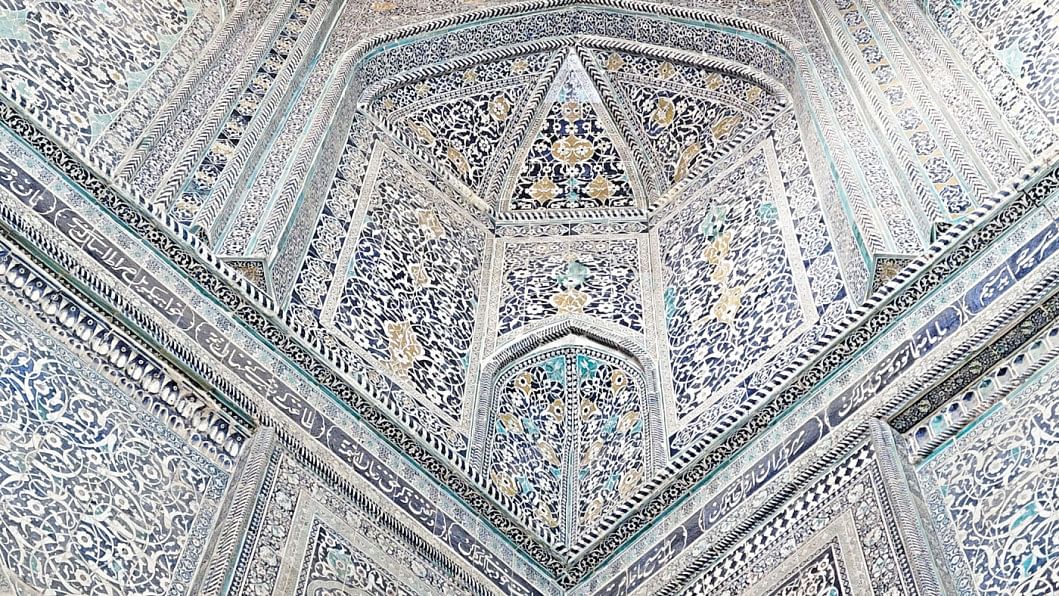
KHIVA'S HANDMADE HATS
By the time I came out of the accommodation, evening was approaching fast. And with that the temperature dropped too. It was 3-4 degrees Celsius, and the wind was picking up. Local shopkeepers, mostly women, set up stalls selling handmade hats called Chugirma, made from sheep wool. The hats were not just beautiful but also a testament to the harsh winters of Khiva.
THE TOSH-HOVLI PALACE
The next day began with a visit to the Tosh-Hovli Palace, constructed in 1834. The palace's mosaics and woodwork are breathtaking. With 166 rooms, it's impossible to see them all, but seeing the opulent quarters of the king and his queens were enough to leave a lasting impression. The vast courtyard offered a glimpse into the grandeur of the past.
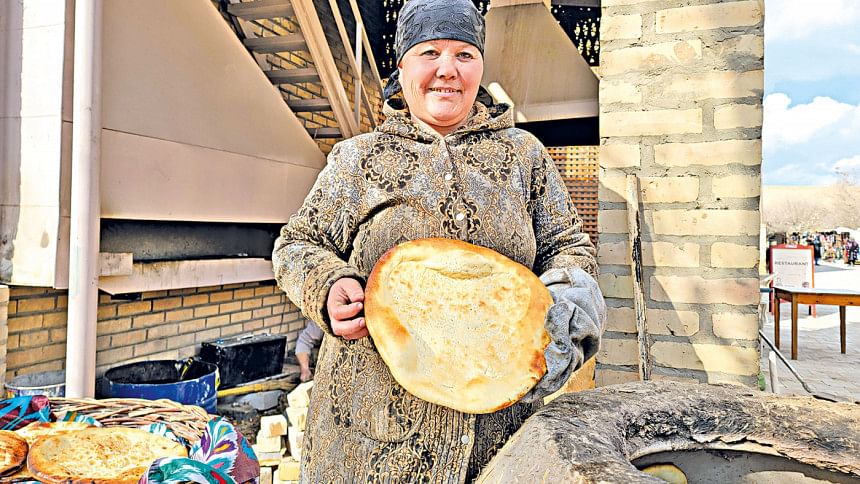
ISLAM KHODJA MINARET
When we arrived at the Islam Khodja complex, the first thing that caught my eyes was the towering minaret basking in the golden morning sun. This towering structure, adorned with turquoise tiles and intricate geometric patterns, stands as a symbol of Uzbekistan's rich cultural heritage. When the awe-inspiring 57-meter-high (187 ft) minaret was built in the 20th century, it was the tallest minaret in Central Asia. It is not just a minaret but a true marvel of medieval engineering.
The minaret's unique architecture allows light and air to flow through its narrow staircase, showcasing the exceptional craftsmanship of its builders. The minaret honours Islam Khodja, a revered religious leader, educator and advisor to the Khanate (state) of Khiva.
KUNYA-ARK FORTRESS
As we stood in front of the Kunya-Ark, a 17th-century fortress, Mirza, our guide, informed us that it was built by the rulers of Khiva, especially under Muhammad Amin Khan, to protect the city from outside threats. The fort also served as the residence of the Khiva Khans and the administrative centre of the Khanate.
It is said that Muhammad Amin Khan wanted to build a minaret that surpassed all other minarets in the region, overlooking all the avenues of the rival city of Bukhara.
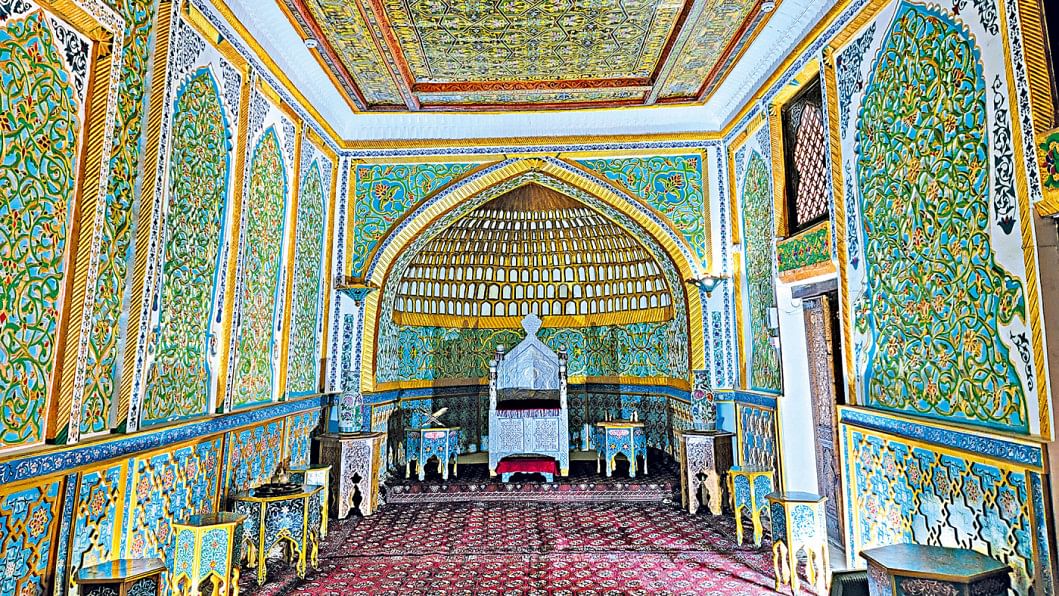
Climbing to the top of the fort, we enjoyed a panoramic view of Khiva, with its ancient structures inside the wall and sprawling cityscape outside.
BREAD: A SYMBOL OF LOVE
Walking through Ichan-Kala thinking of the timeless architectural marvels, I came across a woman making bread, a common yet heart-warming sight in Uzbekistan.
She greeted me with a bright smile, embodying the local tradition of hospitality. Bread is integral part to Uzbek culture, symbolising love and respect. It is served at every meal, often accompanied by green tea. Mirza explained that there are numerous types of bread, but abi naan and patir are the most popular.
Though bread is a staple food in lots of countries in central Asia, Middle East and North Africa that I visited, in Uzbekistan, it is more than a food. It's a part of their culture symbolising love and respect. They break and distribute bread with hands; using knife might be seen as a sign of disrespect here.
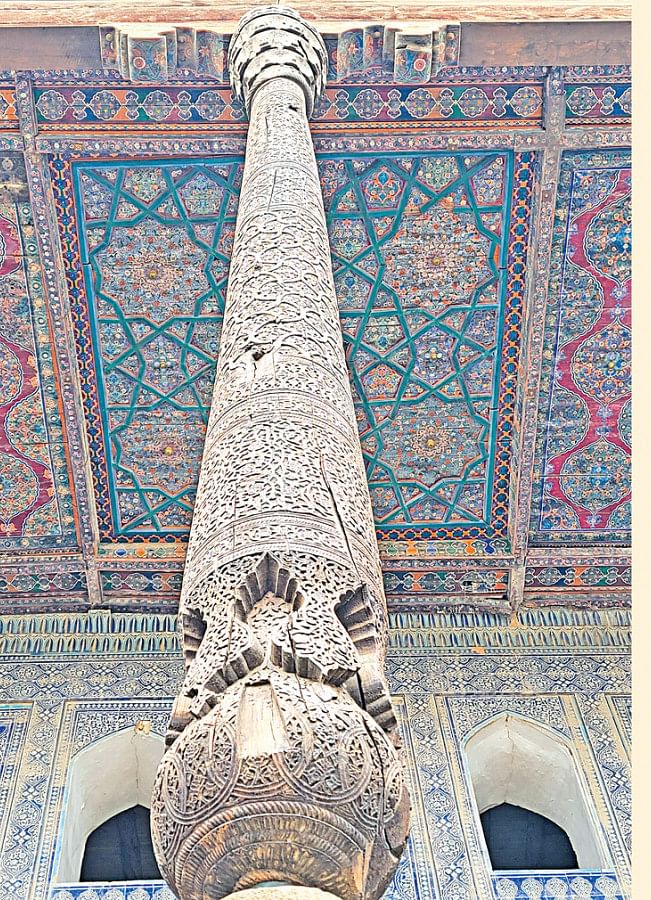
FAREWELL TO KHIVA
My next destination was Urgench, from where a domestic flight would take me to Tashkent. That's a different story.
Khiva offered me a unique glimpse into the past. I, as a lover of archaeology and history, felt a deep connection to this part of the Silk Road.
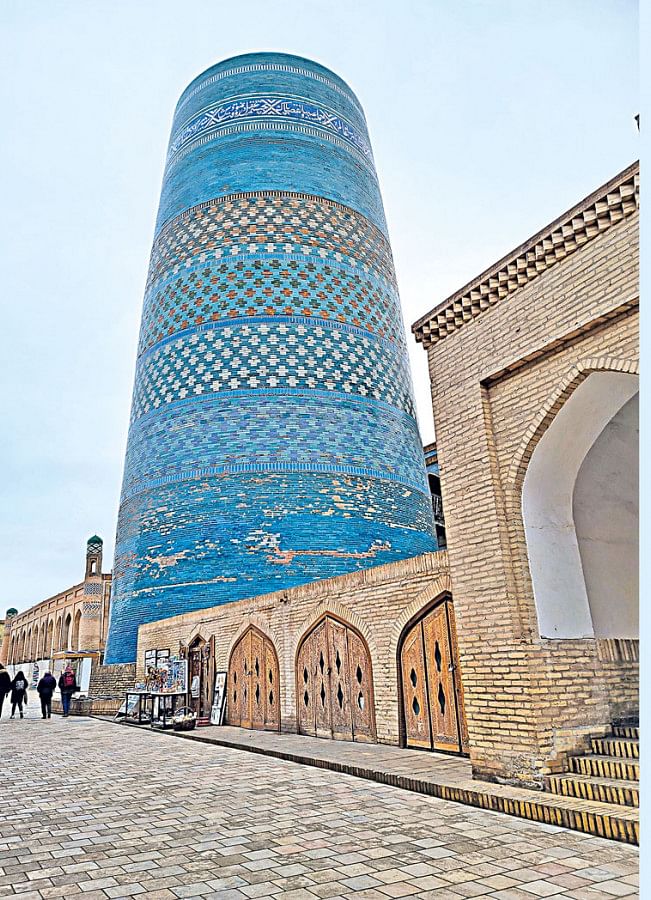
10 days in Uzbekistan
It won't be an exaggeration to say the cities of this ancient country -- Khiva, Samarkand, Bokhara, Tashkent, Ferghana, Andijan, Margillon, and Kokand -- have deeply influenced human history and civilisations. Iranians, Turks, Tatars, Tajiks, Uzbeks, Mongols -- these cities have witnessed the rise and fall of great empires and enriched and inspired cultures and history through tales of heroism, greatness, violence, knowledge, science, art, creation, and diversity.
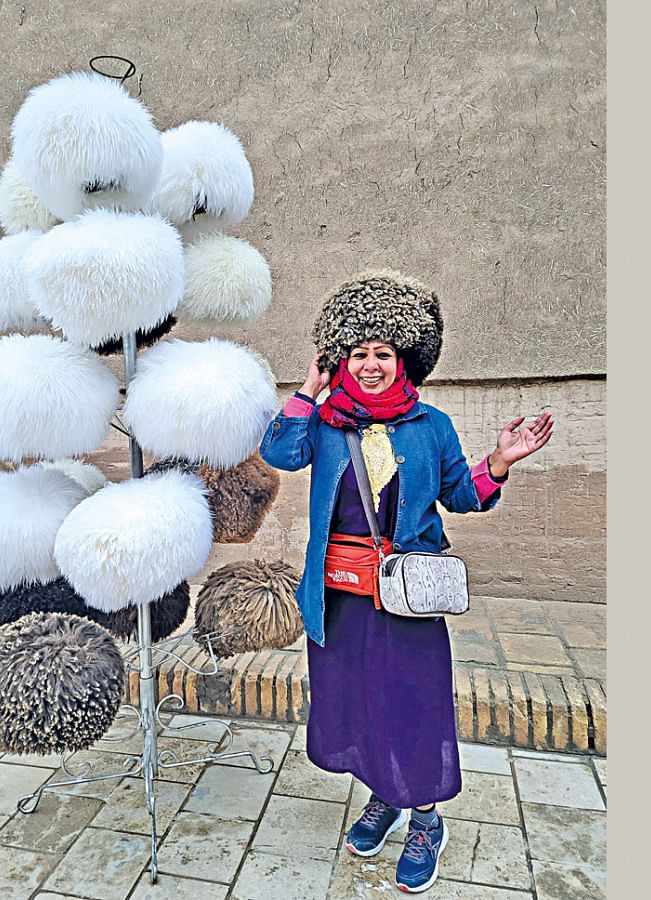
How much one can even comprehend the enormity of all these in 10 days? One can only have a glimpse of those and store as much as one can in the memory. That's it.
I started my journey from the capital city of Tashkent. From this ancient city, I went to Samarkand, a city that may give you the impression that time has frozen here. My next destination was Bukhara, a noise-free lively city. If solitude had a place to live, it would have been here.
Next was Khiva.
I got a taste of the Silk Road on the road trip to Khiva through the steppe. Ah! Seeing the barren lands I read in Bengali translations of Russian literature felt unreal. Yes, childhood dreams do come true indeed!
Then, in the next couple of days, I had remarkable train and road trips to Andijan, Margillon, and Kokand. But those are stories for another day. Let's explore Khiva for now.
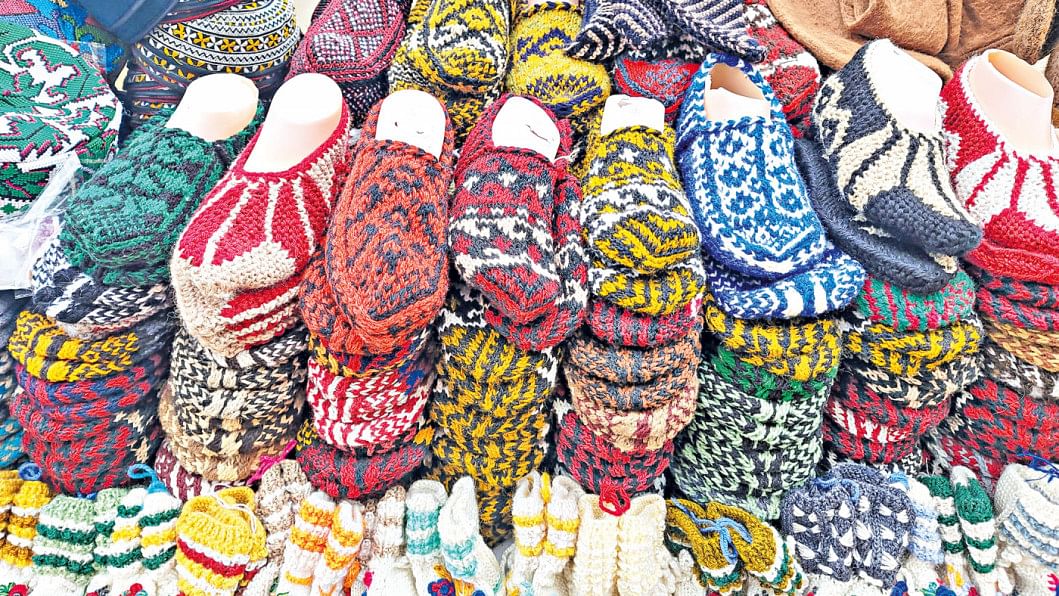

 For all latest news, follow The Daily Star's Google News channel.
For all latest news, follow The Daily Star's Google News channel. 



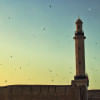
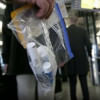

Comments